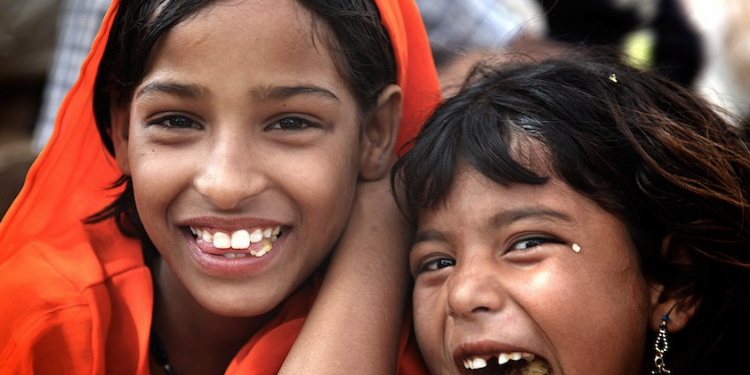India: The Slow Decline of Malnutrition

India is the 2nd most populated country in the world (China beat us out), at nearly 1.3 billion people. As of this very second, India is the home to 1,250,700,730 people. And this number is increasing by the millisecond (This link will give you an idea). Of that gargantuan number, over 25% are hungry, consuming under 1,800 calories a day. That’s a grand total of 312,675,392 people, more or less (probably more).
To put that in perspective, that’s equivalent to the entire population of the United States.
The following facts emphasize how bad the situation really is:
“More than 27 per cent of the world’s undernourished population lives in India, of whom 43 per cent children (under five years) are underweight. The figure is higher than the global average of 25 per cent and even beats sub-Saharan Africa’s figure of 28 per cent. Nearly 50 per cent of child deaths in India occur due to malnutrition.”
Without a doubt, India is the world’s hunger capital. The United Nations Food and Agriculture Organisation (FAO) recently published that there are 100 million more hungry people now then there were at this time in 2013. The glaringly obvious fact is that these 3 million people need to be given sufficient meals.
“A hungry world is a dangerous world. Without food, people have only three options: They riot, they emigrate or they die. None of these are acceptable options.”
It’s true, none of these are acceptable options for anyone. And it’s only made worse by the fact that India has been in this position for decades. There’s really only one positive to this entire situation: people want this to stop. People have been trying to end this situation since the day it began. Unfortunately, we all know that the process of adequately feeding 25% of an ever-growing population is a sluggish, lengthy, gradual process. We can only hope that we reach the final round soon.
Luckily, some think that 2014 may be the year the tortoise crosses the finish line. In 2008, the Lancet Nutrition Series described the world’s nutrition system as “fragmented and dysfunctional.” It was a low blow for, well, the entire world. So new nutrition plans were developed.
- Scaling Up Nutrition (SUN) works to attack the various separate causes of malnutrition in countries such as India. As of now, forty-seven countries are working with SUN to “scale up nutrition.”
- Nutrition For Growth hosts workshops and conferences to provide awareness about malnutrition, and creates pledges to earn money for the cause. They recently made history by receiving $23 billion in pledges to tackle malnutrition.
Recently, India’s Prime Minister Manmohan Singh addressed the immense problems of the arid, hungry areas of his country, by stating simply that ,“In no case should we allow citizens to go hungry.”
Though it’s good to know there’s light at the end of the tunnel, nothing indicates that we’re very close to the end. Many countries have joined programs like SUN, but the country of India has yet to commit, despite the phenomenal results it has achieved for areas of India such as Maharashtra. We have to take into account fraudulent cardholders and hoarders, for they could easily stunt the process. Without a doubt, there is a tedious process ahead of us. But in the recent years, a very sturdy foundation has been built, and 2014 seems like it will be a year full of major transformations and tortoises crossing finish lines.
[Image Attribute: Humans of India]



